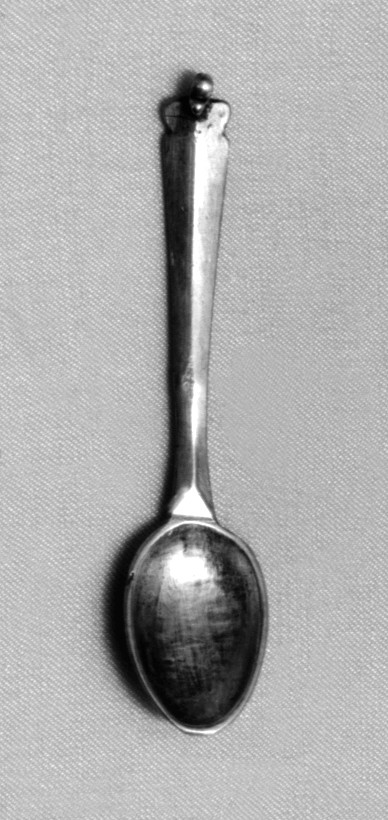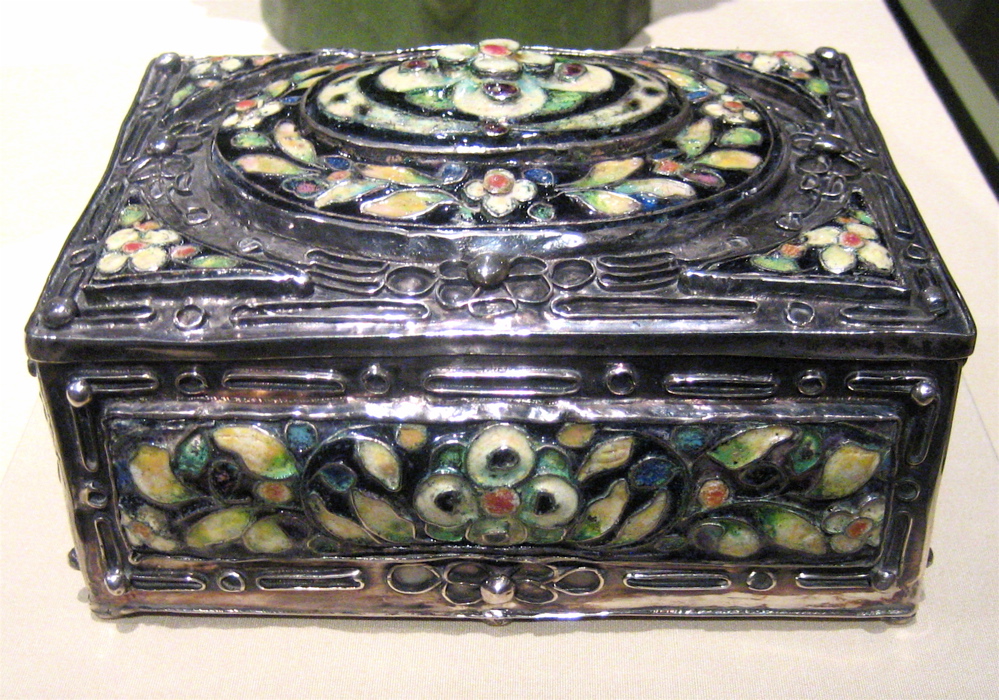|
Snuff Spoon
A snuff spoon is a tiny spoon used for nasal Insufflation (medicine), insufflation of powdered substances. Historically, such spoons were used for psychotropic substances in pre-Columbian America, then Snuff (tobacco), tobacco in the 18th century, and cocaine in the 20th century, hence the names cocaine spoon and coke spoon. Some local statutes in the US treat spoons that are too small and thus "unsuited for the typical, lawful uses of a spoon" as drug paraphernalia. These spoons are so small that they are frequently mistaken for the toy ones. The designs of the snuff spoons closely followed that of the larger ones, and thus can be used to date the étuis containing them. History Snuff spoons have a very long history. Archeologists found them, for example, at Chavín de Huántar site in Peru (presumably used for consumption of hallucinogenic snuffs of ''Anadenanthera colubrina'' more than 2000 years ago), as well as in South Africa, where a combination of a tiny comb and a l ... [...More Info...] [...Related Items...] OR: [Wikipedia] [Google] [Baidu] |
Snuff Spoon MET 17977
Snuff may refer to: Drugs * Snuff (tobacco), a smokeless tobacco product that is snorted * Dipping tobacco, a moistened smokeless tobacco product, colloquially called snuff * Snuff bottle, a historical bottle used to store tobacco * Hallucinogenic snuff, a snuff containing psychedelics Arts and entertainment Literature * ''Snuff'' (Palahniuk novel), by Chuck Palahniuk, 2008 * ''Snuff'' (Pratchett novel), by Terry Pratchett, 2011 * ''S.N.U.F.F.'', a 2011 science fiction novel by Viktor Pelevin Music * Snuff (British band), a punk rock band formed in 1986 * Snuff (American band), country rock band active in the early 1980s * "Snuff" (song), by Slipknot, 2009 * "Snuff", a song by Slayer from '' World Painted Blood'' Other uses in arts and entertainment * ''Snuff'' (film), a 1976 splatter film * "Snuff", an episode of ''CSI: Crime Scene Investigation'' season 3 Companies * American Snuff Company, snuff company established in 1900, affiliated with the American Tobacco C ... [...More Info...] [...Related Items...] OR: [Wikipedia] [Google] [Baidu] |
Anadenanthera Colubrina
''Anadenanthera colubrina'' (also known as vilca, huilco, huilca, wilco, willka, curupay, curupau, cebil, or angico) is a South American tree closely related to yopo, or ''Anadenanthera peregrina''. It grows to tall and the trunk is very thorny. The leaves are mimosa-like, up to in length and they fold up at night. In Argentina, ''A. colubrina'' produces flowers from September to December and bean pods from September to July. In Brazil ''A. colubrina'' has been given "high priority" conservation status. Nomenclature ''Anadenanthera colubrina'' is known by many names throughout South America. In Peru it is known as ''willka'' (also spelled ''wilca,'' ''vilca'' and ''huilca'') which in the Quechua languages means "sacred". Geography ''A. colubrina'' is found in Argentina, Bolivia, Brazil, Ecuador, Paraguay, Peru, Cuba, and Mauritius. Natural growing conditions ''A. colubrina'' grows at altitudes of about with roughly per year of precipitation and a mean temperature ... [...More Info...] [...Related Items...] OR: [Wikipedia] [Google] [Baidu] |
Drug Paraphernalia
The term drug paraphernalia refers to any equipment that is used to produce, conceal, and consume illicit drugs. It includes but is not limited to items such as bongs, roach clips, miniature spoons, and various types of pipes. Product types In the United States, Under federal law the term drug paraphernalia means "any equipment, product or material of any kind which is primarily intended or designed for use in manufacturing, compounding, converting, concealing, producing, processing, preparing, injecting, ingesting, inhaling, or otherwise introducing into the human body a controlled substance." Aluminum foil " Chasing the dragon" (CTD) (), or "foily" in Australian English, refers to inhaling the vapor of a powdered psychoactive drug off a heated sheet of aluminium foil. The moving vapor is chased after with a tube (often rolled foil) through which the user inhales. Banknotes (risky "drug paraphernalia") Sharing snorting equipment (straws, banknotes, bullets, etc) ha ... [...More Info...] [...Related Items...] OR: [Wikipedia] [Google] [Baidu] |
Cocaine
Cocaine is a tropane alkaloid and central nervous system stimulant, derived primarily from the leaves of two South American coca plants, ''Erythroxylum coca'' and ''Erythroxylum novogranatense, E. novogranatense'', which are cultivated almost exclusively in the Andes. Indigenous peoples of South America, Indigenous South Americans have traditionally used coca leaves for over a thousand years. Notably, there is no evidence that habitual coca leaf use causes addiction or withdrawal, unlike cocaine. Medically, cocaine is rarely employed, mainly as a topical medication under controlled settings, due to its high abuse potential, adverse effects, and expensive cost. Despite this, recreational drug use, recreational use is widespread, driven by its euphoric and aphrodisiac properties. Levamisole induced necrosis syndrome (LINES)-a complication of the common cocaine Lacing (drugs), cutting agent levamisole-and prenatal cocaine exposure is particularly harmful. Street cocaine is ... [...More Info...] [...Related Items...] OR: [Wikipedia] [Google] [Baidu] |
Swizzle Stick
A swizzle stick is a small stick used to stir drinks. The original swizzle sticks were created in the 18th century at a rum plantation in the West Indies using the branch of the ''Quararibea turbinata'' (also known as the "Swizzle stick tree"). In the late 19th and early 20th centuries, stir sticks made of glass were created to shake out the bubbles from champagne, whose carbonation caused indigestion for some drinkers. Swizzle sticks became particularly ornate with the advent of themed establishments such as the tiki bar and are sometimes kept as a souvenir or collected. See also * ''Quararibea turbinata'' References External links * * {{Bartend Products introduced in 1933 Bartending equipment Culture of the Caribbean Cocktail garnishes Rums ... [...More Info...] [...Related Items...] OR: [Wikipedia] [Google] [Baidu] |
McDonald's
McDonald's Corporation, doing business as McDonald's, is an American Multinational corporation, multinational fast food chain store, chain. As of 2024, it is the second largest by number of locations in the world, behind only the Chinese chain Mixue Ice Cream & Tea. Brothers Richard and Maurice McDonald founded McDonald's in San Bernardino, California, in 1940 as a hamburger stand, and soon Franchising, franchised the company. The logo, the Golden Arches, was introduced in 1953. In 1955, the businessman Ray Kroc joined McDonald's as a franchise agent and bought the company in 1961. In the years since, it has expanded internationally. Today, McDonald's has over 50,000 restaurant locations worldwide, with around a quarter in the US. Other than food sales, McDonald's generates income through its ownership of 70% of restaurant buildings and 45% of the underlying land (which it leases to its franchisees). In 2018, McDonald's was the world's second-largest private employer with 1 ... [...More Info...] [...Related Items...] OR: [Wikipedia] [Google] [Baidu] |
Snuff-box
A decorative box is a form of packaging that is generally more than just functional, but also intended to be decorative and artistic. Many such boxes are used for promotional packaging, both commercially and privately. Historical objects are usually called caskets if larger than a few inches in more than one dimension, with only smaller ones called boxes. Gift box Traditionally gift boxes used for promotional and seasonal gifts are made from sturdy paperboard or corrugated fiberboard. These boxes normally consist of a base and detachable lid and are made by using a die cutting process to cut the board. The box is then covered with decorative paper. Gift boxes can be dressed with other gift packaging material, such as decorative ribbons and gift tissue paper. Work box The most common type of decorative box is the feminine work box. It is usually fitted with a tray divided into many small compartments for needles, reels of silk and cotton, and other necessaries for stitchery. T ... [...More Info...] [...Related Items...] OR: [Wikipedia] [Google] [Baidu] |
Stopper (plug)
A stopper, bung, or cork is a cylindrical or conical Closure (container), closure used to seal a container, such as a bottle, tube, or barrel (storage), barrel. Description Unlike a Lid (container), lid or bottle cap, which encloses a container from the outside without displacing the inner volume, a bung is partially or wholly inserted inside the container to act as a seal. A bung can be defined as "a plug or closure used to close an opening in a drum or barrel. It is called a plug when referring to a steel drum closure." A glass stopper is often called a "ground glass joint" (or "joint taper"), and a Cork (material), cork stopper is called simply a "cork". Stoppers used for wine bottles are referred to as "corks", even when made from another material. A common every-day example of a stopper is the Wine cork, cork of a wine bottle. When used to seal the bungholes of barrels, the stopper is called a bung. Other bungs, particularly those used in chemical barrels, may be m ... [...More Info...] [...Related Items...] OR: [Wikipedia] [Google] [Baidu] |
Earpick
Ear picks, also called ear scoops, or ear spoons, or earpicks, are a type of curette used to clean the ear canal of earwax (cerumen). They are preferred and are commonly used in East Asia, South Asia and Southeast Asia because Asians tend to develop dry ear wax. In Asia, these are traditionally made from bamboo or precious metals such as silver or gold, but more commonly now, from stainless steel or plastic. European ear scoops produced up to the early 19th century were made from either bronze or precious metals such as silver. Use of ear picks to remove wax is discouraged by some health professionals for fear of damaging the ear and causing infections. Types Other than the wide variety of materials used to make them, ear picks vary widely in their tips and embellishments. Disposable plastic ear picks with a cotton swab at one end are increasingly popular. Tips *''Ladle'': The traditional and most commonly seen type of tip for the ear pick. They comprise a spoon or spatu ... [...More Info...] [...Related Items...] OR: [Wikipedia] [Google] [Baidu] |
Hallucinogenic Snuff
A hallucinogenic snuff, or psychedelic snuff, is a powder prepared from plants containing psychedelic alkaloids and insufflated (snorted) to produce hallucinogenic effects. Hallucinogenic snuffs have been used as entheogens by indigenous peoples of South and Central America for thousands of years. The snuffs are prepared most commonly from ''Anadenanthera'' species including ''Anadenanthera peregrina'' and ''Anadenanthera colubrina'', but also from species of other genuses including '' Mimosa'' and '' Virola''. They have local names including cohoba, ebene, paricá, yopo, cébil, and vilca, among many others. The active compounds in these snuffs include the serotonergic psychedelics bufotenin (5-HO-DMT), dimethyltryptamine (DMT), and 5-MeO-DMT. The materials of snuffs may also be used as enemas instead of via insufflation. Although previously thought to be non-hallucinogenic and/or toxic, ethnobotanist Jonathan Ott and colleagues showed in 2001 that bufotenin is an acti ... [...More Info...] [...Related Items...] OR: [Wikipedia] [Google] [Baidu] |
Insufflation (medicine)
Insufflation () is the act of blowing something (such as a gas, powder, or vapor) into a body cavity. Insufflation has many medical uses, most notably as a route of administration for various drugs. Medical uses Surgery Gases are often insufflated into a body cavity to inflate the cavity for more workroom, e.g. during laparoscopic surgery. The most common gas used in this manner is carbon dioxide, because it is non-flammable, colorless, and dissolves readily in blood. Diagnostics Gases can be insufflated into parts of the body to enhance radiological imaging or to gain access to areas for visual inspection (e.g. during colonoscopy). Respiratory assistance Oxygen can be insufflated into the nose by nasal cannulae to assist in respiration. Airway clearance technique, Mechanical insufflation-exsufflation simulates a cough and assists Mucociliary clearance, airway mucus clearance. It is used with patients with neuromuscular disease and muscle weakness due to central nervous ... [...More Info...] [...Related Items...] OR: [Wikipedia] [Google] [Baidu] |








